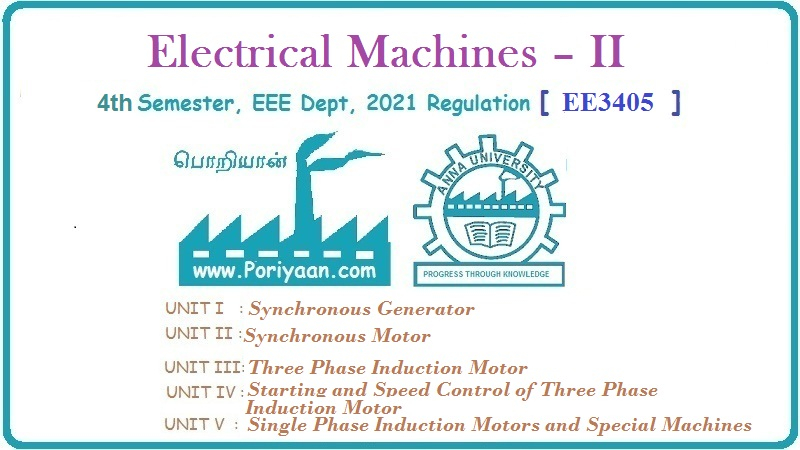Electrical Machines II: UNIT II: Synchronous Motor
Why Synchronous Motor is Not Self Starting?
Consider the rotating magnetic field as equivalent to physical rotation of two stator poles N1 and S1
Why Synchronous Motor is Not Self Starting?
Consider
the rotating magnetic field as equivalent to physical rotation of two stator
poles N1 and S1
Consider
an instant when two poles are at such a position where stator magnetic axis is
vertical, along A-B as shown in the Fig. 4.5.1 (a).

At
this instant, rotor poles are arbitrarily positioned as shown in the Fig.
4.5.1.
At
this instant, rotor is stationary and unlike poles will try to attract each
other. Due to this rotor will be subjected to an instantaneous torque in
anticlockwise direction as shown in the Fig. 4.5.1 (a).
Now
stator poles are rotating very fast i.e. at a speed Ns r.p.m. Due to
inertia, before rotor hardly rotates in the direction of anticlockwise torque,
to which it is subjected, the stator poles change their positions. Consider an
instant half a period latter where stator poles are exactly reversed but due to
inertia rotor is unable to rotate from its initial position. This is shown in
the Fig. 4.5.1 (b).
At
this instant, due to the unlike poles trying to attract each other, the rotor
will be subjected to a torque in clockwise direction. This will tend to rotate
rotor in the direction of rotating magnetic field.
But
before this happens, stator poles again change their positions reversing the
direction of the torque exerted on the rotor.
Key Point As a result, the
average torque exerted on the rotor is zero. And hence the synchronous motor is
not self starting.
Note
: The
question is obvious that what will happen if by chance the rotor position is in
such a way that the unlike rotor and stator poles are facing each other ? But
owing to the large inertia of the rotor, the rotor fails to rotate along with
the stator poles. Hence again the difference of position of magnetic axes gets
created and rotor gets subjected to quickly reversing torque. This is because
the speed with which rotating magnetic field is rotating is so high that it is
unable to rotate the rotor from its initial position, due to the inertia of the
rotor. So under any case, whatever may be the starting position of the rotor,
synchronous motor is not self starting.
Review Question
1. Why synchronous
motors are not self starting ? Explain in detail.
Electrical Machines II: UNIT II: Synchronous Motor : Tag: Engineering Electrical Machines - II : - Why Synchronous Motor is Not Self Starting?
Related Topics
Related Subjects
Electrical Machines II
EE3405 Machine 2 EM 2 4th Semester EEE Dept | 2021 Regulation | 4th Semester EEE Dept 2021 Regulation
